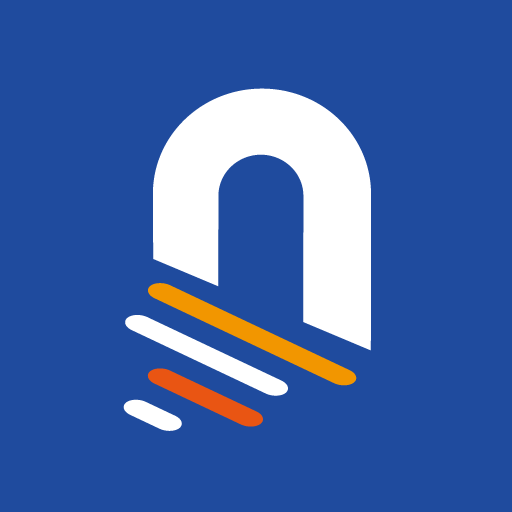In the previous article we talked about the principles of Open Economy 3.0, which can form the basis of economic relations between dApp developers, content authors and users. We used the application store as an example and showed the advantages that developers and users receive from decentralized storage and economic incentives. But there is a much wider range of its use cases. So, where else can decentralized storage and the Open Economy 3.0 model be effectively applied?

1. Storage for your files
Forget about tedious registration procedures, verification and other obstacles on the way to placing files to secure storage. At the time of writing, storing 2 TB in a decentralized storage for a year costs $66. Compare with Google One service at a yearly $99,99 for 2 TB.
Another advantage is the flexibility of payments. There are decentralized storages where you pay only for the files you actually uploaded. Google charges a fee for storage even when you don’t use it.
2. Corporate cloud
Storage is not obliged to be individual. You will have a possibility to share your files with your co-workers. Such storage also can become a corporate cloud and deploy file sharing using a flexible permission system.
3. Family cloud & Smart home devices
Decentralized storage can also be used in a family to share in-home devices: TV, pads, computers, smartphones, Playstation, Xbox and many others. In this case all the data of these devices will be stored in a secure place.
4. A safe one-window access to the crypto space
Such storage also can provide you safe and convenient access to Web 3.0 world, which is a users working desk with seamless blockchain network switch. Users will soon get the possibility to customize their unique app list for each network. In the dApp market users can download and use various crypto services, including decentralized exchanges, DeFi apps, NFT-marketplaces, swaps, games and many others. 5. Hosting decentralized applications
Developers can use decentralized storage to host and run the application in their own protected and isolated space. They receive rewards for traffic that their app created in a decentralized storage based ecosystem. They also do not have to pay any commission from the dApp store, as they usually have to do in Apple or Google stores.All the ecosystem apps exchange user audiences in one service and receive one big crypto community.
6. Independent monetization of creators’ content through Open Economy 3.0
This is one of the most important features of the decentralized network — the ability to embed any economic models for the interaction of authors and consumers of content. In the Open Economy, you manage and configure your earning opportunities by yourself.
Read more: Decentralized storage and the Open Economy 3.0 concept.
7. Sync photos/videos in the cloud, directly from the camera
Photo and video content usually requires large disk space for storing and plenty of time to copy it from camera to the disk and then to the cloud. Decentralized storage will allow you to sync photos and videos directly from the camera.
8. Secure encrypted messengers
The integration of cloud storage brings instant messaging applications to an unprecedented level of security and privacy. No one will be able to read your chats if you keep your private key safely. Blockchain encryption and decentralization storing principle ensure the impossibility of data leaks.
9. In-app community tools
Decentralized ecosystem can provide applications with secure chats. This service helps dApp to build the community within the website or a software. The ecosystem projects do not need to create their own channels in discord, telegram, etc.
Embedding chats and other community building tools directly into dApps or developing them as part of the ecosystem, developers can avoid a lot of problems connected with centralized messengers. For example, Discord crypto community servers face hacks more frequently. In decentralized storage based messenger, which is located inside the dApp, such incidents can be avoided.
10. Crypto contacts address book
There are many cases when storing sensitive data (like your crypto contacts addresses and the names of its holders) in a conventional centralized cloud led to unauthorized access to cryptocurrency wallets and smart contracts. There is even a type of malware, Sniffers. Gaining access to your device, this software searches for exactly such data on accounts on the device.
Placing sensitive data in a decentralized storage and a strong password to your account will help remove your crypto contacts list from any malware radar and prevent leakage.
11. Access to the Internet without Wi-Fi
Decentralized ecosystem can serve as a mesh network where user devices connect to each other and become a switch for other participants. It is necessary for only one of the mesh network members to be connected to the Internet. The other network participants get the access through one with the best Internet connection signal. Using a decentralized ecosystem such networks can also help to bypass any restrictions.
12. CDN Services
Decentralized storage is great for caching and temporary data storage tasks. Content delivery networks have huge storage needs for such data. They rely on replicating the most frequently requested data in centralized data centers around the world. And the user receives a cached image or video from the server closest to him. This situation has vulnerability to the centralized data center failures. In the case of using a decentralized network, the network adapts to requests and stores files on the nodes closest to the user.
13. Uncensored and unblocked access to video content
The Internet is becoming increasingly censored. To get access to certain resources, you often have to use VPN services. But even they, as practice shows, can be slowed down or even blocked. A decentralized storage network solves this problem. No firewall or filter will be able to determine what data the nodes exchange with each other. By placing video content such a storage, you guarantee access to it wherever there is an opportunity to connect to it. And vice versa, wherever you can connect to the decentralized storage, you will be able to access the content hosted in it.
14. Minimizing the cost of content consumption by users
Here are some examples of how this can work:
Listening to music or podcasts without restrictions, with monetization for listening (each author will receive income without commissions, for actual unique listening).
Downloading programs without censorship, with payment for outgoing app store traffic.
Watching movies in a decentralized online cinema with payment only for the viewed content (literally, you pay only for the viewed part of the movie).
Reading books by the same scheme
The use of professional libraries: photo banks, 3D libraries, databases of architectural drawings, product layouts and other types of data.
15. Deploying of unused storage capacities of computers
DeNet Storage solves the problem of excessive hardware production and, simultaneously, the problem of non-efficient use of existing devices. DeNet mining node software has a very low system requirement and can work on a laptop or a mobile phone.
This solution also provides instruments for cleaning the storage from deleted and unclaimed data. This feature helps network users to use available resources in the most efficient way.
Your own option
The list of decentralized storage use cases presented in this article is far from completed. These are just the most obvious areas, some of which have yet to be developed. In addition, in the comments to this material or on the Telegram chat, you can offer your own version of using decentralized storage and we will add it to the next edition of this list.









